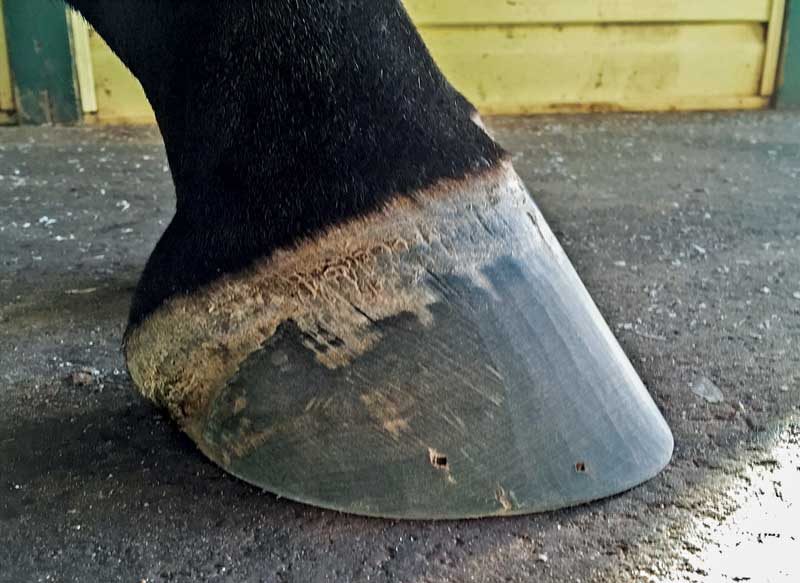American Farriers Journal
American Farriers Journal is the “hands-on” magazine for professional farriers, equine veterinarians and horse care product and service buyers.

Distortions typically occur in the bottom half of the foot, and top dressing is usually needed only in the affected areas, John Voigt says.
Farriers agree on the definition of top dressing as the practice of rasping the top side of the hoof to remove any flares or other distortions before shaping the shoe and putting it on. Not all agree, though, that it’s the right thing to do.
Chris Broadus, a Shelbyville, Ky., farrier who shoes Thoroughbred horses, says he caught a lot of flak about a year ago when he posted on a farriers’ social media site that he doesn’t top dress his horses’ feet.
“I don’t do that,” he says. “I take out all of the flares and distortions from the bottom, running my rasp around the edge to shape the foot that I want.”
That’s the way Broadus was taught to do it, he adds, “but more importantly, I believe it leaves a stronger foot on the horse. I’ve found with my horses that not top dressing creates a stronger foot over a period of time.”
Broadus believes his approach removes less of the hoof, and his goal is “to leave as much integrity in the foot as I possibly can.” He says top dressing often removes too much hoof wall.
…